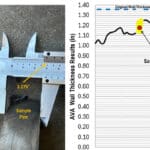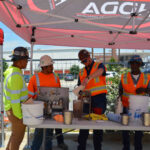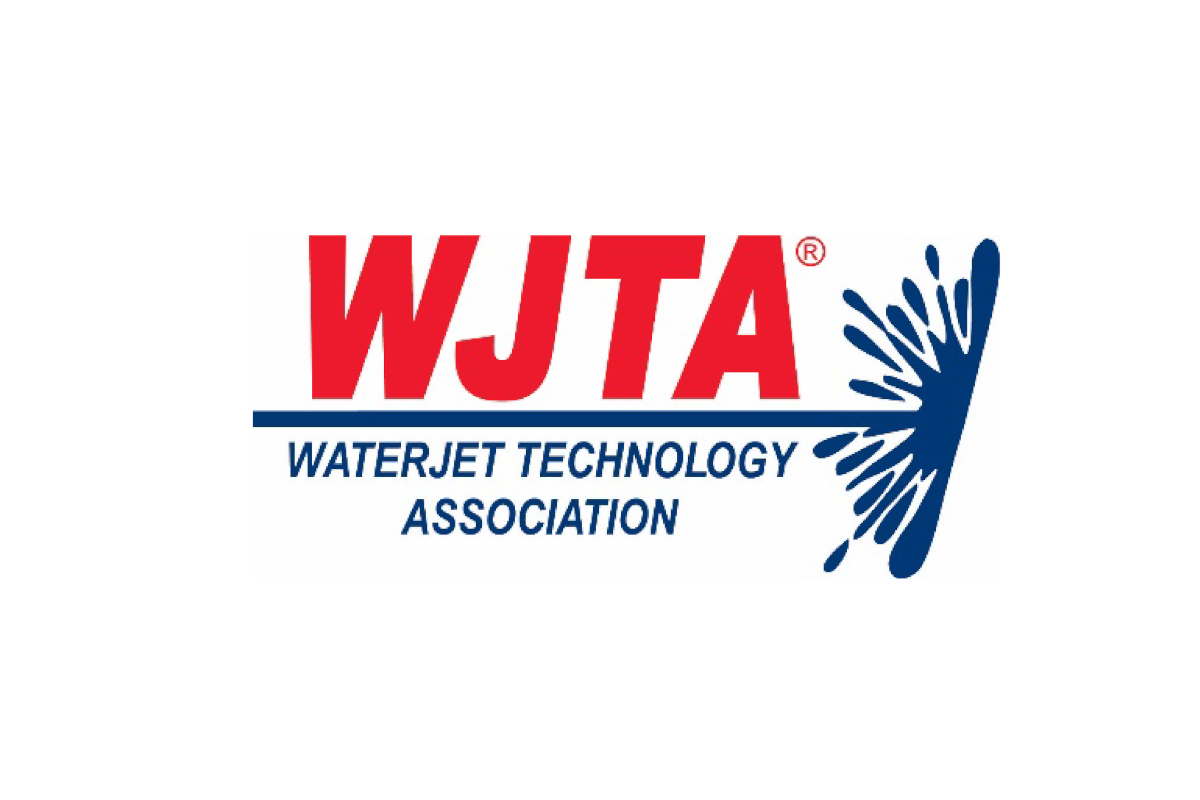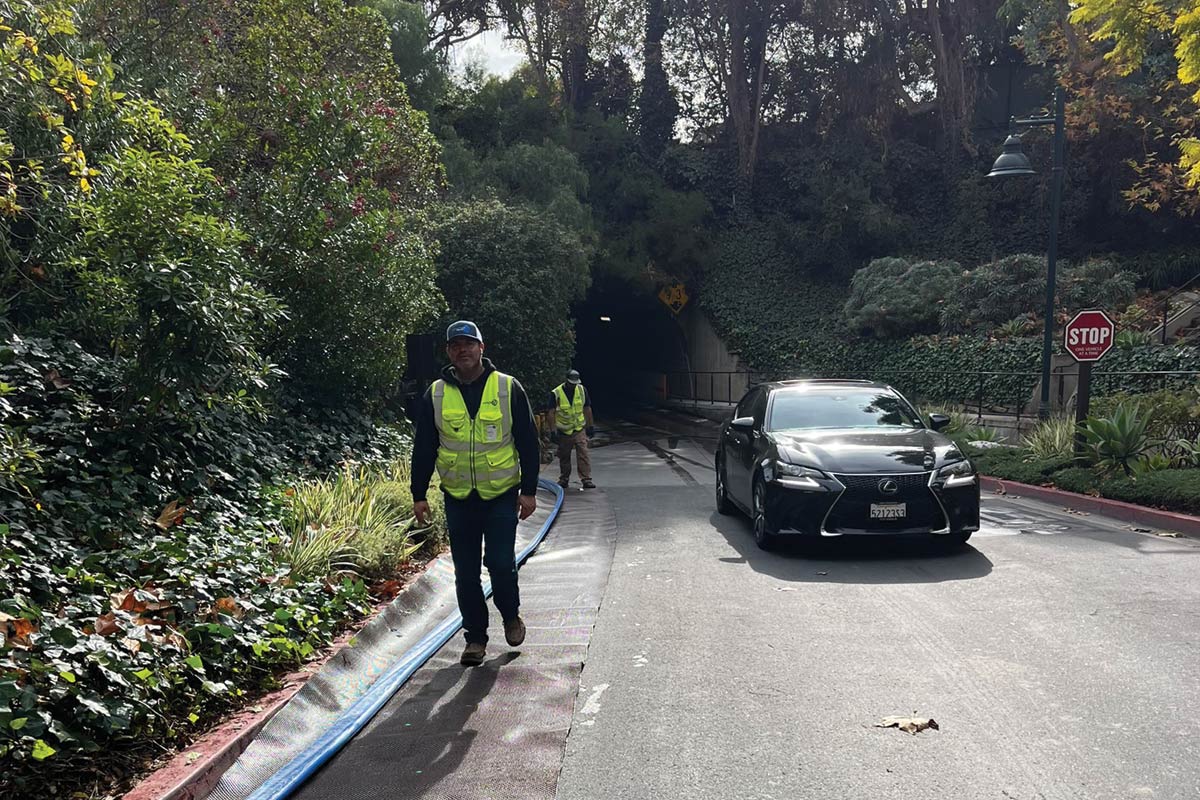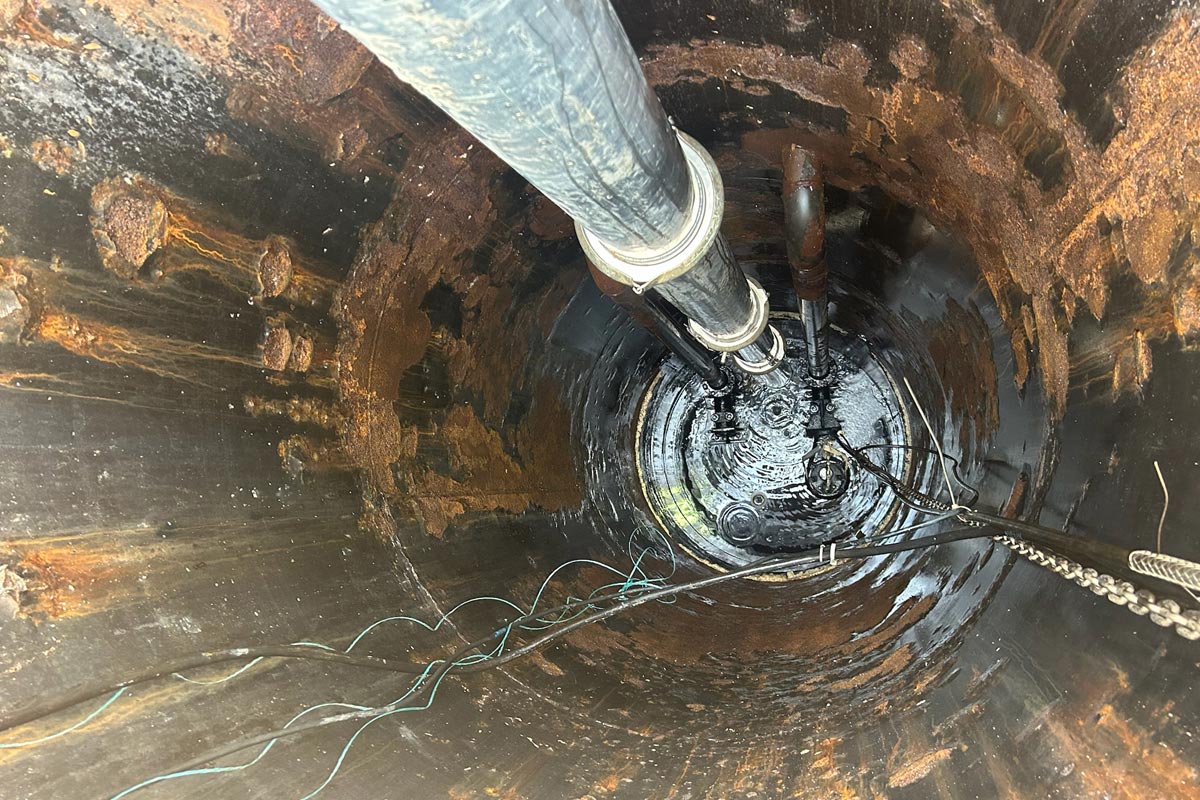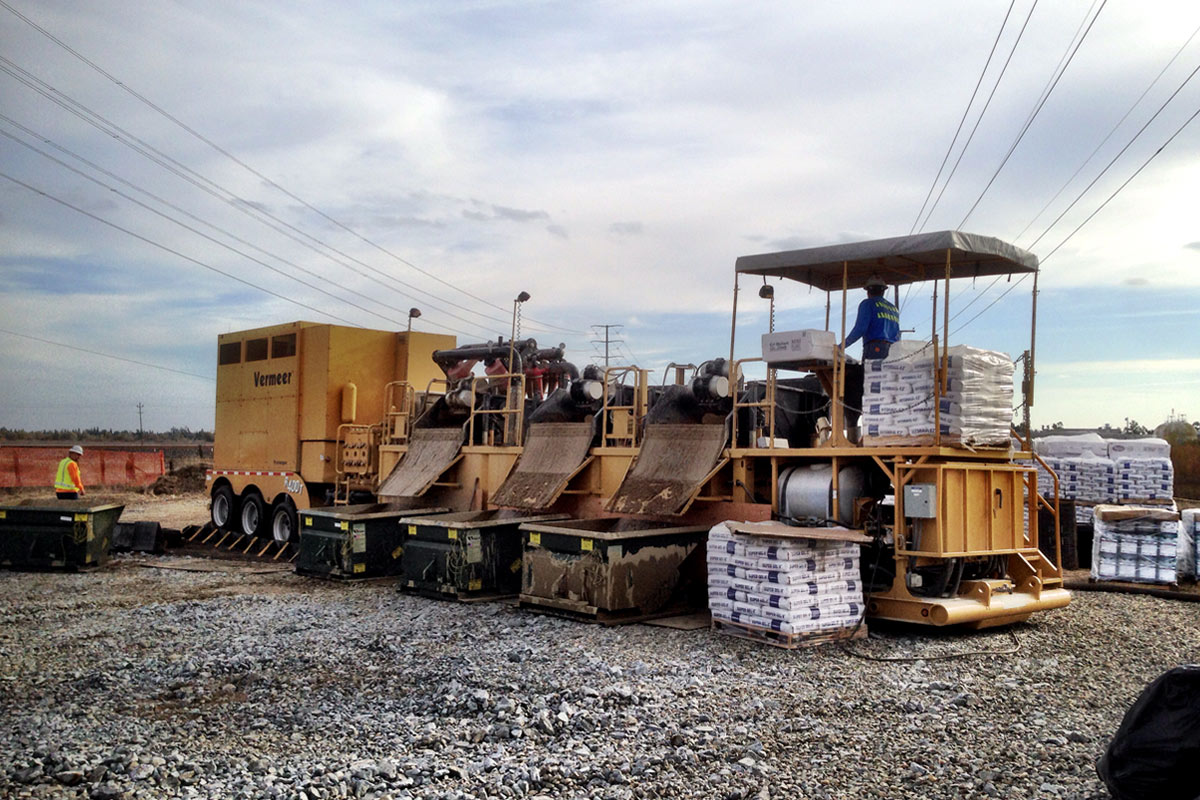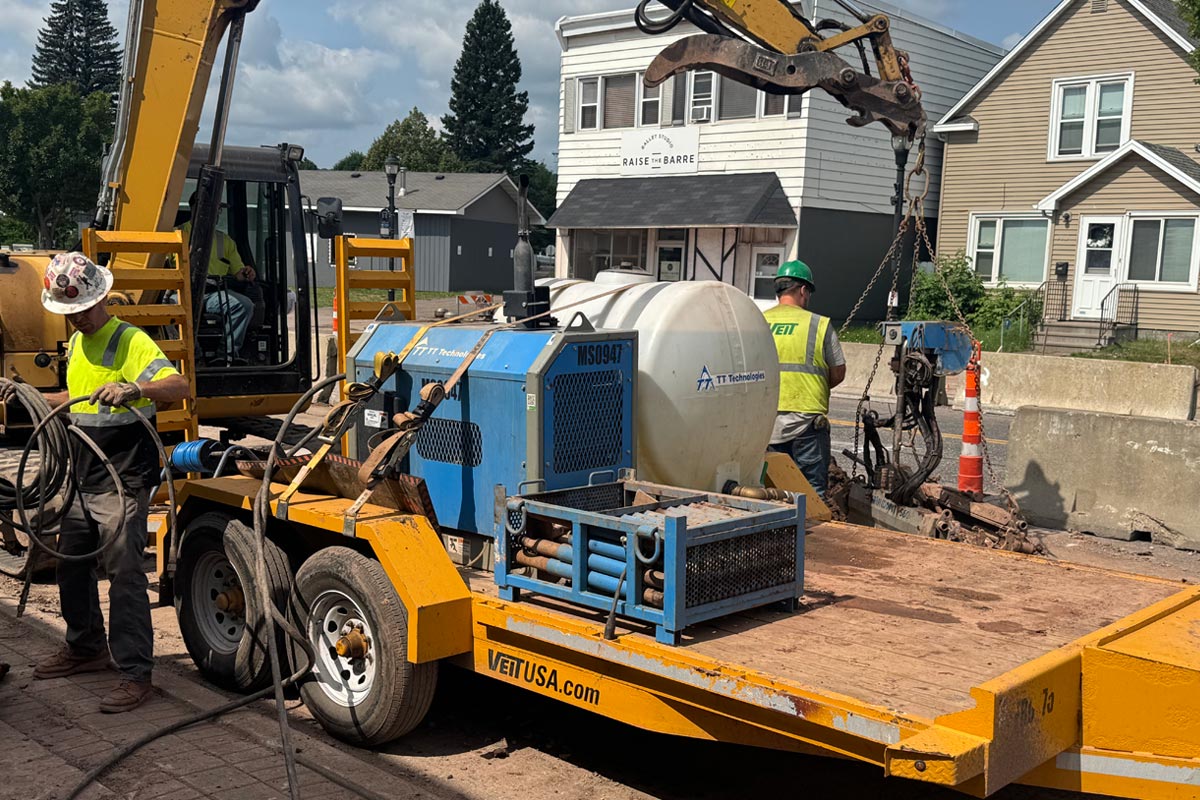
Lead Service Line Replacement with Pit-Launched HDD
The push to replace lead service lines continues throughout North America. Cities and municipalities throughout Canada and the United States have initiated programs to update water systems. This is to eliminate the use of lead pipes completely. Trenchless technology has been playing a significant role in these programs, as have skilled utility contractors.
One such program just south of the Canadian border in the City of Duluth, Minnesota, is targeting the replacement of lead water services for eligible residents. A large portion of the replacement is being completed by one of the region’s top utility and specialty contractors. Veit & Co. Inc., of Rogers, Minnesota, is leading the effort.
A Compact Approach
Veit’s portion of the project consists of replacing residential lead services with 1-in. HDPE services. This is done through pit-launched directional drilling. The project is complex. It requires significant planning and coordination.
Veit Utility Superintendent Eric Raspotnik said, “This portion of the project includes approximately 534 individual locations, totally over 22,000 ft of 1-in. HDPE. And another 4,000 ft of 2-in. HDPE for main extensions. All of that needs to be completed within a specific time frame, so coordination is key.”
“I would say that it isn’t day-to-day coordination, it’s almost hour-by-hour coordination with Eric and myself and his field staff, and the operators,” says Jon Brostowitz, project manager. If that drill is not working, we’re not moving forward because of instructions or utilities in the way.”
With Duluth’s old neighborhoods, narrow streets, and tight setbacks, standard directional drilling was off the table. Instead, Veit opted for a more compact approach, pit-launched directional drilling.
Mark Dorn, Trenchless Specialist with trenchless equipment manufacturer TT Technologies, explained the method’s advantages. He pointed out how pit-launched directional drilling can be the method of choice in a situation like this.
“The pit-launched drill is very compact and portable. And because the unit is pit-launched, it doesn’t require the setback that a standard directional drill requires,” Dorn says. “That really makes it ideal for a project like this in these old neighborhoods.”
For the City of Duluth project, Veit Construction chose a Grundopit Pit-Launched Directional Drill from TT Technologies.

Contractor Background
Veit is one of the country’s leading specialty contractors, with more than 97 years of experience. The company prides itself on a relentless pursuit to push the construction industry forward and deliver for its customers. In 1928, Frank Veit founded the company on a boot-string budget with a single Chevy truck and a dump box. Now in its third generation as a family-owned business, Veit is among the most respected specialty contracting and waste management companies in the nation.
With more than 900 team members, Veit continues developing long-term relationships with clients, vendors, employees, and communities. Veit’s corporate office is based in Rogers, Minnesota. The company has six additional regional offices across the Upper Midwest in Minnesota, Wisconsin, North Dakota, and Iowa, including the city of Duluth.
Safety is another focal point for the company. According to Brostowitz, safety isn’t just for the morning meeting — it’s an all-day, every-day commitment.
“In addition to the creation of regional safety committees and the launch of a new safety recognition program, the company has implemented several actions over the past year. These actions directly impact employees’ safety and health and enhance the safety culture at all levels,” says Brostowitz. “This includes a new glove policy requiring ANSI cut-level 4 gloves on all sites for employees and visitors, a stretch and flex program, a new hire hazard identification training checklist and mentorship program, forward-facing cameras in all CDL/heavy trucks, training on emergency action plans, adding an equipment inspection QR code into equipment for operators, and continuing education on the A Workplace Accident Injury Reduction (AWAIR) program.”
In addition to a strong focus on safety, communication and coordination are also strong points for Veit.
On The Job
Veit crews are the epitome of choreographed efficiency moving neighborhood to neighborhood. Crew size is typically eleven for the drilling project, with one team drilling, one team backfilling and restoring, and another excavating and shoring for the next installation.
Maintaining that pace can be difficult. “I would say the number of utilities that we dig around every day makes this project challenging, and just how fast we’re moving, doing roughly 20 sites a week. You basically have to be two weeks ahead of the guys in the field at all times and have backup plans in case of a homeowner not answering the door,” Brostowitz said.
Typical Jobsite
Typical installation length depends on the side of the street crews are working on. On average it’s 60 ft. Services travel under landscaping, driveways, sidewalks, and a host of other typical residential obstacles. Crews try to avoid them by directional drilling. The typical drilling pit is 8 ft deep. It is shored using a 6-by-6 ft shoring box that is the ideal size for the pit-launched drill rig. Groundwater levels in the area require crews to dewater the drill pits.
Limiting restoration is the name of the game for the project in Duluth. And one of the main reasons trenchless technology is taking center stage, specifically the pit-launched drill. “The city is very particular about restoration and so are we. Of course, it costs money and you’re dealing with residents,” Raspotnik said. “So, pit-launched is a less restoration option compared to the surface drill, where we would need to set back in someone else’s yard that we’re not even working in.”
The Old Service
There is no need for a bypass as existing service is running until it is switched over to the new service. The old lead service is left in the ground.
Raspotnik said, “Usually the first thing we do is dig down and shut off the existing service. This allows us to cut the lead pipe and get it out of our way. It’s just one less thing to deal with. We don’t want to be digging around the live water line. But realistically, there is only a small amount of time that the residents are without service.”
Crews are ready to begin drilling once the service is disconnected.
Jim Schill is a technical writer in Mankato, Minnesota.
Latest Posts
- BGE’s ’50 for 50′ Community Service Initiative Delivers Lasting Impact
- Garney Breaks Ground on Tampa Bay Water’s Largest Pipe Project to Date
- Publisher’s Message – Recognizing the Firms Shaping the Future of Trenchless Engineering
- City of Baltimore Extends the Life of a 93-Year-Old Water Main
- HDDA Becoming the Voice of the HDD Industry
Next Up
HDD Academy | February 19-20, 2026 | Scottsdale, Arizona | Learn more




